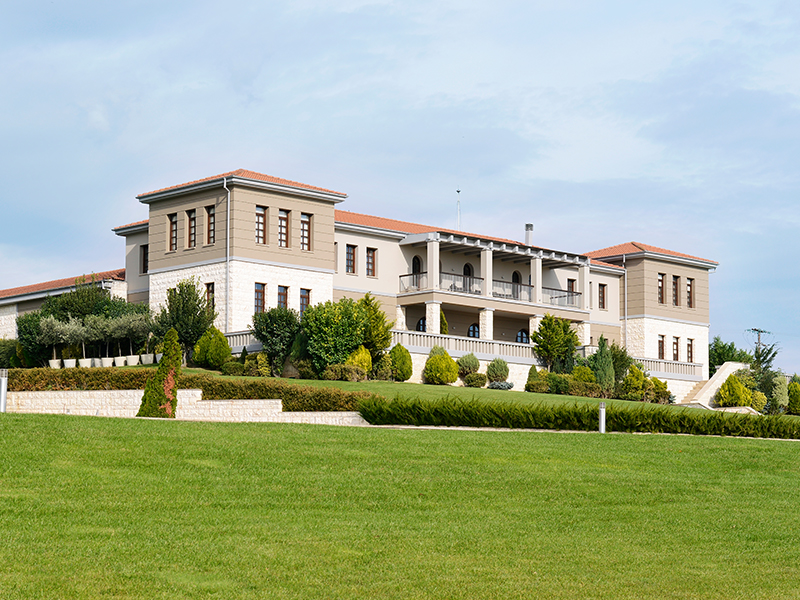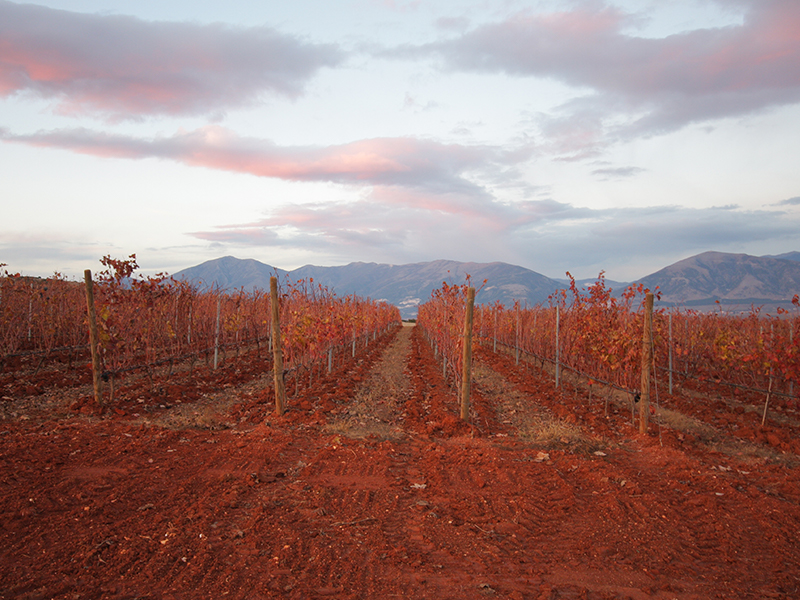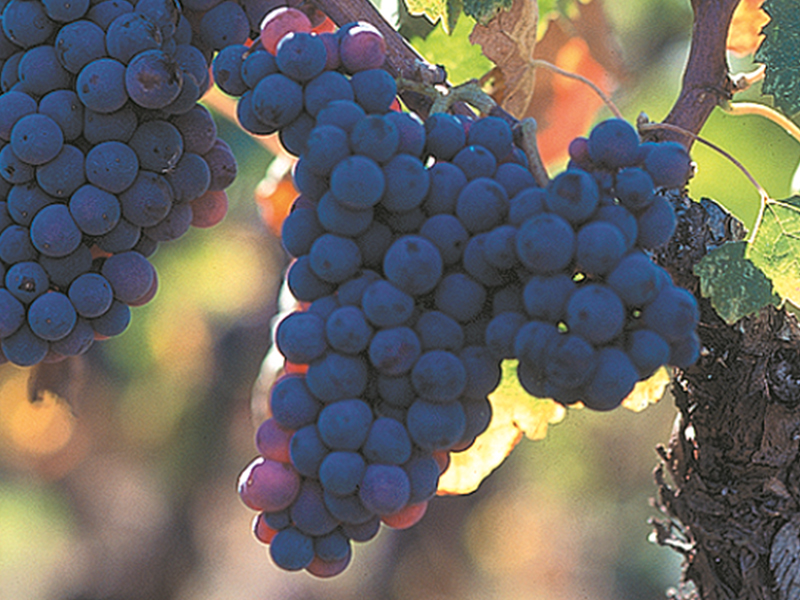A travelogue to pleasure
Kavala, Drama, Halikidiki, Thessaloniki, Goumeniss, Naoussa, Amyndeon….
Our journey takes us to the Macedonian vineyards.
As consistent wine-loving travellers we know well that Macedonia is an interesting wine region. That is why we are eager to find the small and large – more or less known – islands of wine production that await us, scattered throughout its countryside, on mountain slopes and sunny coasts.
 Photo Archive of Wineplus
Photo Archive of Wineplus
Are you ready?
Traditionally, in Macedonia, vine growers know and care for our own Greek grape varieties, mostly red. In recent decades, however, they have planted other, foreign grapes next to them, which have adapted to the Greek land with remarkable results. Now vine growers and winemakers are doing their best and making fine or exuberant wines that conquer even the most demanding palates.
These are the ones we will get to know. The famous wines with Protected Designation of Origin (PDO): Naoussa, Goumenissa, Amyndeon, Slopes of Meliton and the wines with Protected Geographical Designation (P.G.I.): Macedonia, Kavala, Pangeon, Thassos, Drama, Agora, Adriani, Serres, Halkidiki, Sithonia, Mount Athos (Agio Oros), Thessaloniki, Epanomi, Slopes of Vertiskos, Messimvria, Pella, Florina, Kastroria, Grevena, Imathia, Velventos, Kozani and Siatista.
 Photo Archive of Wineplus
Photo Archive of Wineplus
Kavala
Vineyards in the shade of the “golden” Pangeon Mountain
Protected Geographical Indication (P.G.I.)
Kavala, Pangeon, Thassos
Grape varieties
White: Assyrtiko, Malagousia, Vidiano, SB, Chardonnay, Sémillon, Traminer, Viognier,
Pink: Roditis
Red: Limnio, Agiorgitiko, CS, Merlot, Syrah
A majestic mountain, the Pangeon! They call it Golden, because in ancient times it had famous mines. But let us not forget the other treasure of myths and traditions that link it to Dionysus and the dark Orphic teachings. Here, according to Greek mythology, the god of wine was raised. It was here that the unfortunate Orpheus was devoured by the Maenads. It was here that the tragic myth of Lycurgus, the king of the Edonians (one of the Thracian tribes that lived in the area), who was punished for recklessly and arrogantly opposing the cult of Dionysus, took place. All this, of course, cannot be accidental. They have to do with the extensive worship of the god of wine and of course with the viticulture and wine production in the area. All this, however, until 1920, when most of the traditional cultivations were replaced by tobacco cultivation.
Arriving at the last decades, we find the vineyard area of the Kavala region approaching 3,350 hectares. Table wine and dual usage varieties are cultivated in 2.690 of them. These delicious and healthy grapes, mostly Rozaki, are enjoyed not only domestically but also abroad.
However, since the mid 90’s, the surface of wine producing vineyards has increased significantly, especially in the foothills of Pangeon Mountain, where the Mediterranean climate is also influenced by the mountains.
in the 1990s, the area of vineyards with wine-making varieties increased significantly. Particularly on the south-eastern fringes of Paggaio, where the plants receive the cool breeze of the Strymonikos Gulf while the mountain protects them from the cold north winds. The soils are stony, arid and well drained. In short, the conditions for viticulture are favourable. Taking these factors into account, the winemakers of the region planted an array of Greek and cosmopolitan grapes.
Kavala is known for:
- white aromatic wines, with an especially fruity character and good acidity, freshness and structure
- red wines with rich structure and complexity, of medium to long aging capability.
 Photo Archive of Wineplus
Photo Archive of Wineplus
Drama
A cosmopolitan approach to wine
Protected Geographical Indication (P.G.I.)
Drama, Adriani, Agora
Grape varieties
White: SB, Assyrtiko, Chardonnay, Sémillon, Malagousia, Trebbiano, Viognier
Red: Syrah, Agiorgitiko, CS, Cabernet Franc (CF), Merlot, Nebbiolo, Touriga Nacional
The irresistible Dionysian charm hidden on the slopes of Pangeon Mountain brings us to Drama, to visit its wonderful wineries.
One can find the vineyards of this viticultural zone along the valley and the low hills in the eastern part of the city of Drama gathered mainly in the areas of Adriani, Agora, Mikrochori, Kokkinogia and the foothills of Menikio Mountain, in clay soils.
The viticultural activity is expressed in three dimensions: privately owned vineyards with beautiful wineries which can be visited, exceptional wines with great personalities, and a small army of top notch producers dedicated to good quality.
Drama is known for its “modern” wines, with a clean nose, balanced mouth and, in general, all those characteristics that denote the sense of quality.
Halkidiki
A gifted vineyard
Protected Designation of Origin (P.D.O.)
Slopes of Meliton (1982)
white/red – dry
Protected Geographical Indication (P.G.I.)
Halkidiki, Sithonia, Mount Athos (Agio Oros)
Grape varieties
White: Athiri, Assyrtiko, Malagousia, Muscat of Alexandria, SB, Chardonnay, Viognier, Trebbiano
Pink: Roditis
Red: Limnio, CS, CF, Xinomavro, Grenache Rouge, Syrah, Merlot
In ancient Halkidiki, the cities which were famous for their wines were Mendi (a city in the southwestern of the Kassandra peninsula), Akanthos (known today as Ierissos) and Afitis (known today as Afitos). Stagira, the birthplace of Aristotle, was the city where he planted the first model vineyard. Nowadays, vineyards are cultivated in central and mountainous Halkidiki, in Sithonia and Mount Athos.
In Sithonia, with the guidance of the great French oenologist Emile Peynaud, the largest experimental vineyard of Greek and foreign varieties ever known to Greece was planted in the sun-drenched western slopes of the Mount Meliton. The dry and thermal climate and the beneficial humidity of the sea favours the production of fine wines. Thus is born a complex red, fleshy, with plenty of red fruit. The P.D.O. Slopes of Meliton from Cabernet Sauvignon, Cabernet Franc and Limnio, an old Greek variety
P.D.O. Slopes of Meliton: this is the first Protected Designation of Origin that included international grapes in its varietal composition. Also, it is one of the few Greek P.D.O. zones able to produce both red and white wines.
In what concerns Mount Athos, there is a year-long tradition in the art of viticulture and wine production in almost all the monasteries. Nowadays, in quite a few of them, we are experiencing their revival. Most of the present-day vineyards of the monasteries are linear; they have been adapted to the necessary use of machinery, but remained non-irrigated just like the old ones. Almost all of them are organically farmed.
P.G.I. Mount Athos is one of the first Geographical Indications legislated in Greece in 1981.
Thessaloniki
Wine in multiple facets
Protected Geographical Indication (P.G.I.)
Thessaloniki, Epanomi, Nea Messimvria, Slopes of Vertiskos
Grape varieties
White: Assyrtiko, Malagousia, Chardonnay, SB, Viognier, Athiri, Savatiano
Pink: Roditis
Red: Xinomavro, Limnio, CS, Merlot, Syrah, Grenache Rouge
Vines have always been cultivated in the Prefecture of Thessaloniki, from the plains to the coastlines of Thermaikos Bay, all the way up to the mountains. Although the vineyards were destroyed by phylloxera in the early 20th century, the refugees who arrived in the area after the Asia Minor Catastrophe managed to revive them. In the mid 80’s, when the “small producers” started becoming more known, the Prefecture of Thessaloniki dynamically entered the quality Greek wine sector, filling our glasses with high quality wines, many of which have become trendsetters.
The coastline vineyards, in the areas of Epanomi and Nea Michaniona, were planted in sandy soils which are well drained. Their wines feature intense fruit and a rich taste. “New generation” wines, softer, modern.
On the slopes of the mountain Vertiskos, vines were planted close to some of the most beautiful villages of the Prefecture, in the traditional settlement of Ossa, in Sohos and Askos. In this accommodating ecosystem, elegant white wines are produced as well as aromatic rosés and harmonious reds, reflecting the characteristics of the grape varieties they are made from.
Most of the residents of Nea Messimvria, in the western areas, come from Eastern Rumelia. When their ancestors migrated to their new homeland they brought along with them their experience in viticulture. Nowadays, the linear vineyards, with the tall and strong vines, lined up along the road, produce white and red wines of exceptional finesse, from Greek and international varieties.
Naoussa
Complex, vigorous and absolutely fascinating wines from Xinomavro
Protected Designation of Origin (P.D.O.)
Naoussa (1972)
red/dry/semi-dry/semi-sweet
Protected Geographical Indication (P.G.I.)
Imathia
Grape varieties
White: Prekniariko (Preknadi)
Pink: Roditis
Red: Xinomavro, Merlot, Syrah
The viticultural zone of Naoussa is the most famous wine region in Northern Greece.
Naoussa is known for red wines with a fascinating complexity and stamina in time.
The P.D.O. Naoussa wine is produced exclusively from Xinomavro, a red grape well acclimatized to continental climates, which is cultivated in more areas than any other variety in Greece.
Xinomavro in Naoussa easily reaches perfect ripeness. It appears with remarkable ageing potential but also with a balance in the sugar – acid – tannin content. It is the ecosystem that favours it.
The vineyards, covering a total area of around 400 hectares, have a privileged position. They are located on the south-eastern slopes of the Vermio Mount and are thus protected from the cold northern winds while benefiting from the rays of the midday sun. Of course, we should not underestimate the care and love of the Naoussa vine-growers for their grapes and wine. And then the baton is passed to the winemakers. They make a wine with a characteristic fruit and herbal aroma that – during the one year of ageing in oak barrels (mandatory by law) – evolves into a bouquet of spices with hints of tomato. Then the tannins soften, giving the wine good structure and richness.
Amyndeon
The northernmost Greek vineyard
Protected Designation of Origin (P.D.O.)
Amyndeon (1972), rosé/dry/semi-dry/semi-sweet, rosé sparkling/dry/semi-dry, red/dry/semi-dry
Protected Geographical Indication (P.G.I.)
Florina
Grape varieties
White: SB, Chardonnay, Gewürztraminer, Malagousia, Assyrtiko
Pink: Roditis
Red: Xinomavro, Syrah, Merlot

Amyndeon is the northernmost and cooler viticultural zone in Greece. The vineyards are located on the plateau of Amyndeon (Amyndeon, Agios Panteleimonas, Kleidi, Xino Nero, Petres, Rodonas, Fanos) and in the areas Filotas, Aetos, Variko. Of those, almost 50% are found between the lakes of Petres and Vegoritida.
The poor, sandy – sand and clay soil allows for the efficient drainage of the rain water and for the production of wines with aroma intensity, finesse and good structure.
Most of the vineyards are linear (Royat training system), in rows. Since the sandy soil did not favour the spread of phylloxera, one can find vineyards with own rooted vines, aging more than 80 years in cup shape (Gobelet system).
Amyndeon and Xinomavro as a pair give us delightful red wines. Also, this combination is ideal for the production of rosé and sparkling wines.
The grape grown hear is Xinomavro, the well-known red variety of Western Macedonia. At this altitude, at 600 to 750 meters, facing cool summers and low night temperatures, the grape ripens slowly and many years, with difficulty. Thus we are in an ideal area for the production of rosé and sparkling wines. It is of course no coincidence that the Greek state officially recognized Amyndeon as an rosé -still and sparkling- wine P.D.O. in 1972, in addition to the red-.
Amyndeon is known for:
- aromatic white wines with finesse
- still and sparkling rosé wines with an expressive nose, typical of the variety
- complex red wines.
Goumenissa
Protected Designation of Origin (P.D.O.)
Goumenissa (1979)
red dry
Protected Geographical Indication (P.G.I.)
Slopes of Paiko
Grape varieties
White: Assyrtiko, Malagousia SB, Chardonnay
Pink: Roditis
Red: Xinomavro, Negoska, CS, Merlo, Syrah
The vineyards of Goumenissa stretch on the south eastern slopes of Mount Paiko and on hills with a slight incline on the south of the city, at an altitude of no more than 250 meters.
The climate here is continental with cold winters and dry summers. The wind blows all year round, warding off disease, and the humidity from the neighbouring Axios valley mitigates the summer heat waves.
Here, Xinomavro is grown along with Negoska, a local red grape. The vines have been planted with both varieties in a ratio of about 3:1 and the wines with the P.D.O. Goumenissa label are produced from their co-fermentation.
Goumenissa is known for red wines with finesse and lively colours. They incorporate the soft tannins of Negoska with the fruit and the long, pleasant aftertaste referencing right back to the Xinomavro.
By Maria Netsika (chemist/oenologist, wine writer and author)

